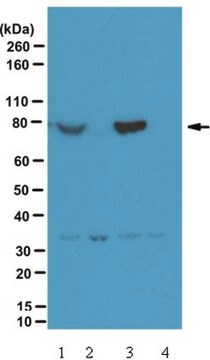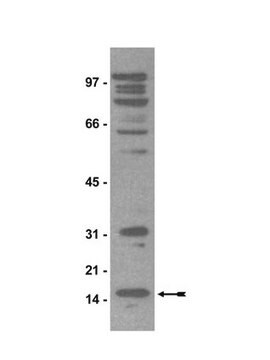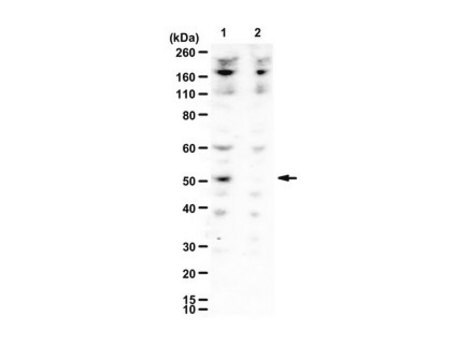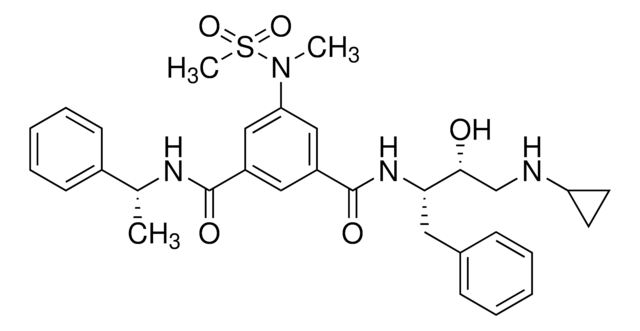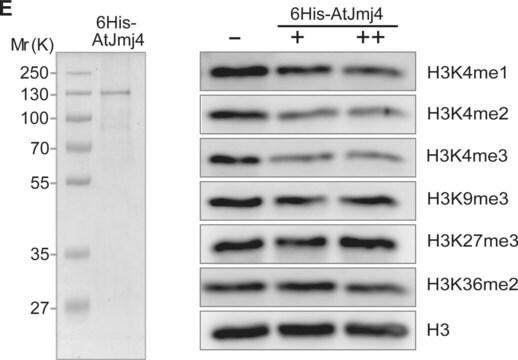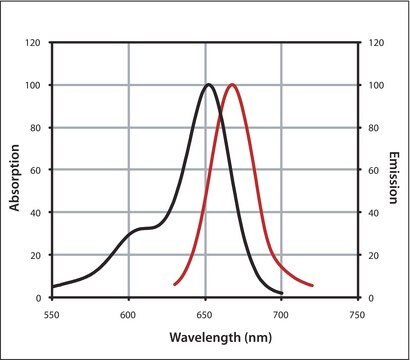07-2054
Przeciwciało anty-MBD1, CT
from rabbit
Synonim(y):
Białko palca cynkowego typu CXXC 3, białko wiążące metylo-CpG MBD1, białko zawierające domenę wiążącą metylo-CpG 1, białko domeny wiążącej metylo-CpG 1, izoforma PCM1 białka domeny wiążącej metylo-CpG 1, regulator czynnika wzrostu fibroblastów 2 (FGF-2) <
About This Item
Polecane produkty
pochodzenie biologiczne
rabbit
Poziom jakości
rodzaj przeciwciała
primary antibodies
klon
polyclonal
reaktywność gatunkowa
human
metody
ELISA: suitable
western blot: suitable
numer dostępu NCBI
numer dostępu UniProt
Warunki transportu
wet ice
docelowa modyfikacja potranslacyjna
unmodified
informacje o genach
human ... PCM1(5108)
Opis ogólny
Specyficzność
Immunogen
Zastosowanie
Zewnętrzne laboratorium wykazało, że to przeciwciało nadaje się do testu ELISA (1:1000).
Epigenetyka i funkcje jądrowe
Biologia chromatyny
Jakość
This antibody recognizes MBD1 on 10 µg of HeLa cell lysate.
Opis wartości docelowych
Postać fizyczna
Przechowywanie i stabilność
Komentarz do analizy
Lizat komórek HeLa
Inne uwagi
Oświadczenie o zrzeczeniu się odpowiedzialności
Nie możesz znaleźć właściwego produktu?
Wypróbuj nasz Narzędzie selektora produktów.
Kod klasy składowania
12 - Non Combustible Liquids
Klasa zagrożenia wodnego (WGK)
WGK 2
Certyfikaty analizy (CoA)
Poszukaj Certyfikaty analizy (CoA), wpisując numer partii/serii produktów. Numery serii i partii można znaleźć na etykiecie produktu po słowach „seria” lub „partia”.
Masz już ten produkt?
Dokumenty związane z niedawno zakupionymi produktami zostały zamieszczone w Bibliotece dokumentów.
Nasz zespół naukowców ma doświadczenie we wszystkich obszarach badań, w tym w naukach przyrodniczych, materiałoznawstwie, syntezie chemicznej, chromatografii, analityce i wielu innych dziedzinach.
Skontaktuj się z zespołem ds. pomocy technicznej